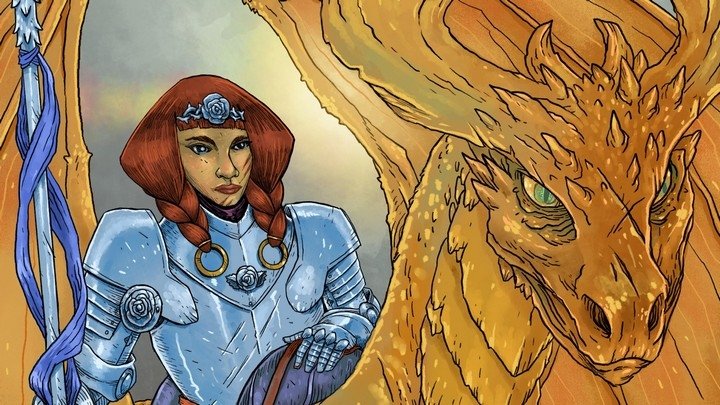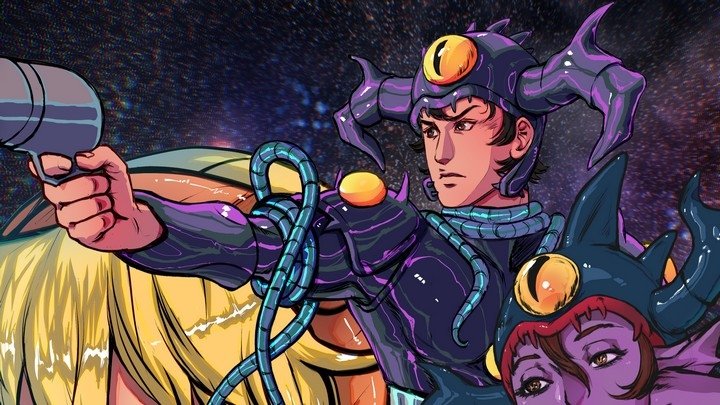King's Quest: A Legacy of Death
Mlylwb droo ylgsvi gl hloev gsrh.
One of the quickest ways to alienate myself in polite company is to reveal my opinions about classic adventure games. Consequently I find that taking high tea at the local vicarage is a fraught experience, as it's usually only a matter of time until the priest wants to know what I think of Day of the Tentacle. And I have to state that I never really found particularly enjoyable. Readers, it’s a scene straight out of Downton Abbey; Earl Grey spilling everywhere. Egg and cucumber sandwiches dropping from shock-slacked jaws. The verger being physically restrained by choirboys as she goes for her machete, screaming “he’s a f[expletive deleted] dead man, I’m taking his f[expletive deleted] head”. I have never seen Downton Abbey but I assume this is exactly what it is like.
But I, as has come to be expected of me, digress. I cared not for the frivolity of Lucasarts. Almost all of their games leave me a little cold. I don’t find their humour amusing and the puzzles tend to be bland and unfulfilling. Except Full Throttle, that game rules. But broadly speaking, Lucasarts’ classic point-and-clicks, while I acknowledge their status, evident quality and massive appeal, are not for me. Give me something weird. Give me something quirky and janky. Give me Sierra, baby.

King’s Quest – the brainchild of Sierra co-founder Roberta Williams – was released 35 years ago today for the IBM PCjr. It’s widely credited as the first adventure game with animated graphics, a technical leap from the completely static near-monochrome visuals of earlier Williams titles such as 1980’s Mystery House. And while the game was revolutionary, it would be foolish to argue that King’s Quest is anything more than perfunctory in 2019. Naturally it’s absurd to judge it by modern standards, but even taking that into account it’s surprising just how basic the game is both narratively and in terms of its puzzles. It’s a very simple take on fairy tale characters and tropes, with a gnome, gingerbread house, and a gruff billy goat. It’s a great nostalgia trip and a stunning museum piece, but fun to play? Not so much.

Its legacy, however, is a different story. Series' like the hilariously silly Space Quest, the wonderfully complex Police Quest, the problematic (but groundbreaking) Leisure Suit Larry – none would exist without King’s Quest. Nightmarishly difficult and intensely eager to kill the player or put them into an unwinnable game state, Sierra adventures have a bad reputation with today's gamers. I understand why, to a point, but where’s the fun if you can’t die? In a variety of hilarious ways? Look, I get it. Reaching the yeti only to realise you accidentally used the custard pie to alleviate your starvation in the desert and rendered the game impossible to finish? That sucks. But it sucks in a funny, memorable way. If you can’t die, you can’t regroup. Games like Secret of Monkey Island with no fail state (yes, I know you can drown when you’re chained to the idol, smartarse) just blur into a big homogenous mush for me. There’s no tension, no real challenge. You can just brute force the puzzles without any fear of failure, with nothing to learn. That isn’t fun to me. You know what I like? Forgetting to check all four tyres on my patrol car in Police Quest: In Pursuit of the Death Angel and getting a puncture. Forgetting to poison the porridge before I give it to Mannanan in King’s Quest 3: To Heir Is Human. Forgetting to remove the condom post-coitus in Leisure Suit Larry in the Land of the Lounge Lizards.
I laughed, I swore, I reloaded my save. But I’ve never forgotten.




